On May 6, 2022, a team of Chinese scientists dared to rappel down into a giant sinkhole in The South China Karst, a stone forest known for its rich biodiversity.
What the team found at the bottom of the 630-foot chasm was beyond their wildest imaginings — a discovery of unknown species living amongst them.
How A Sinkhole Is Formed
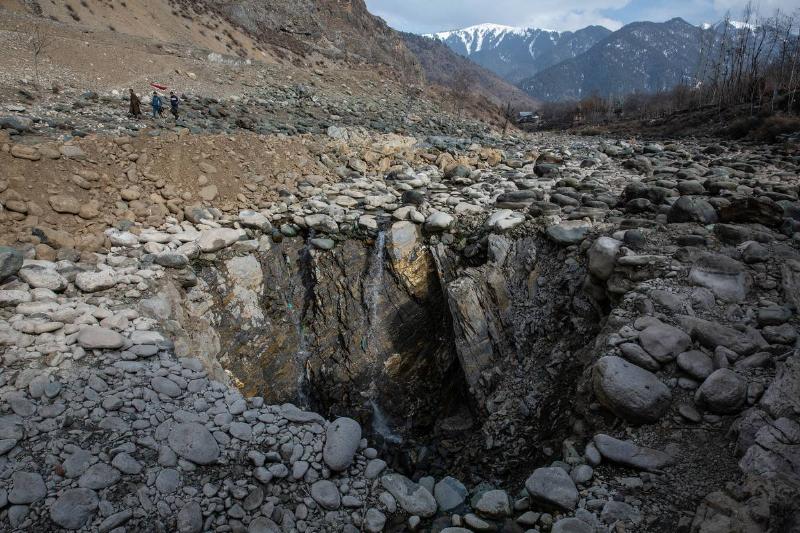
Sinkholes form when the surface layer of the ground collapses and creates a chasm in the earth.
According to USGS, it can be defined as “a depression in the ground that has no natural external surface drainage.” This means rain and other precipitation can fall into the sinkhole, allowing various foliage to grow and thrive.
ADVERTISEMENT
A Sinkhole Large Enough To Fit The St. Louis Gateway Arch
ADVERTISEMENT
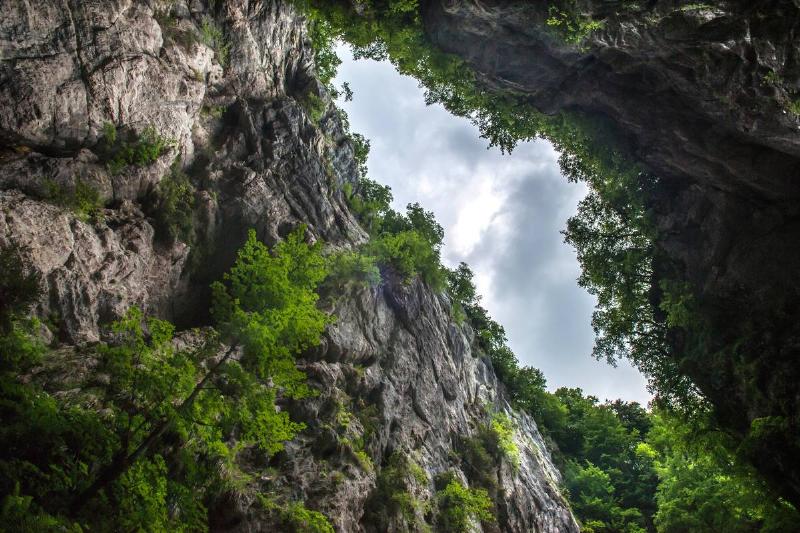
ADVERTISEMENT
Typically, sinkholes form in what geologists call “karst terrain,” land that is primarily made of limestone and dolomite. It is this particular terrain that China scientists were researching when they stumbled upon a missive 630-foot sinkhole.
ADVERTISEMENT
According to the Xinhua news agency, the sinkhole is large enough to fit the St. Louis Gateway Arch.
ADVERTISEMENT
Discovered Via Satellite Images
ADVERTISEMENT
ADVERTISEMENT
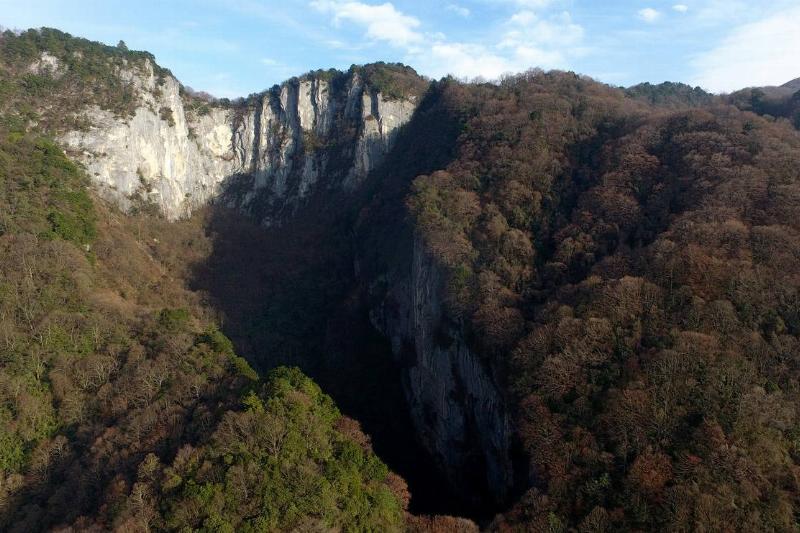
ADVERTISEMENT
They originally came across the sinkhole via satellite images. The pictures showed a massive chasm situated in a densely forested region of China. To confirm the images, an expedition team trekked into the Guangxi Zhuang Autonomous Region to see it for themselves.
ADVERTISEMENT
What they found was something out of a prehistoric movie.
ADVERTISEMENT
It Wasn’t Really A Surprise
ADVERTISEMENT
ADVERTISEMENT
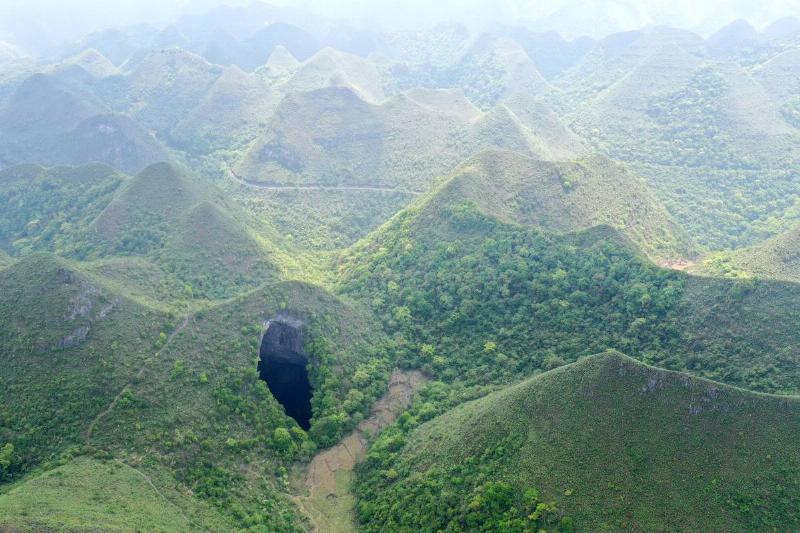
ADVERTISEMENT
The team of scientists discovered the sinkhole on May 6, 2022, and were eager to explore more of the natural occurrence.
ADVERTISEMENT
Although, according to George Veni, the executive director of the National Cave and Karst Research Institute in the United States, due to the location of the sinkhole, it came as no surprise.
ADVERTISEMENT
Southern China Is Prone To Sinkholes
ADVERTISEMENT
ADVERTISEMENT
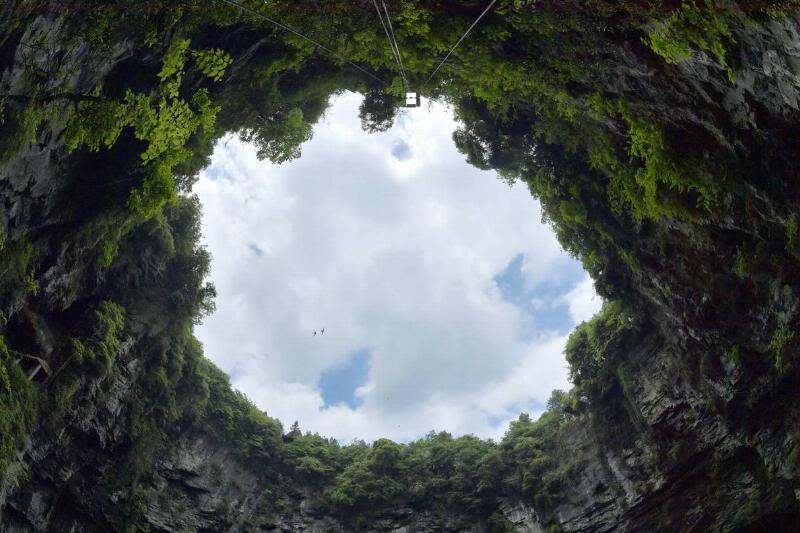
ADVERTISEMENT
During an interview with Live Science, Veni explained that Southern China is prone to sinkholes because of the karst topography, a landscape he said is “prone to dramatic sinkholes and otherworldly caves.”
ADVERTISEMENT
Even so, it was big news solely because of what the scientists discovered when they rappelled down into the hole.
ADVERTISEMENT
A Team Of Speleologists And Spelunkers Was Formed
ADVERTISEMENT
ADVERTISEMENT
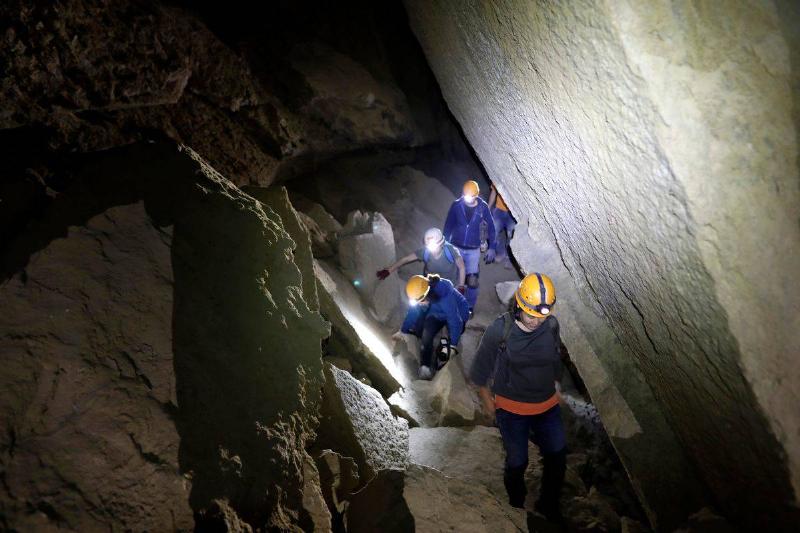
ADVERTISEMENT
For those who don’t know, rappelling is a controlled descent down a rock face, typically done by using a rope. For this particular exploration, a team of speleologists and spelunkers.
ADVERTISEMENT
The former use their knowledge to study caves, particularly in karst regions, and their history, while the latter cave dives as more of a hobby.
ADVERTISEMENT
Spelunking Is Extremely Dangerous
ADVERTISEMENT
ADVERTISEMENT
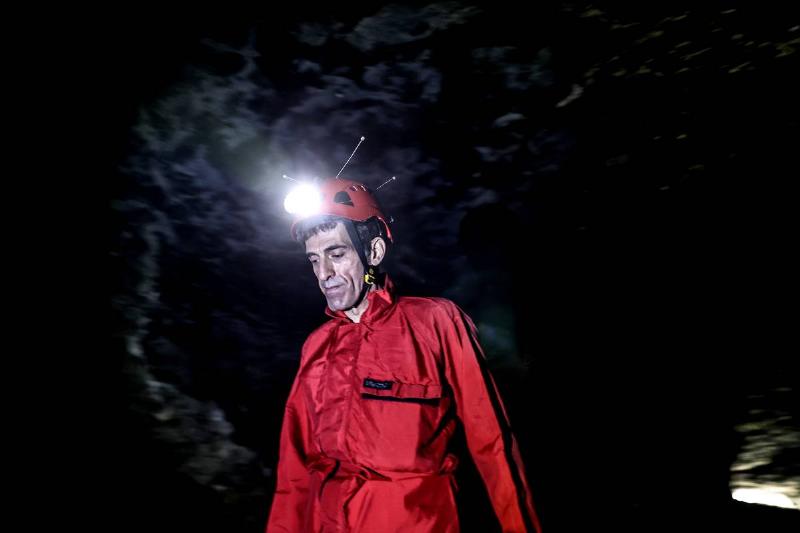
ADVERTISEMENT
This expedition was no walk in the park. Spelunking and caving are notoriously dangerous activities that take years of practice to master.
ADVERTISEMENT
Cavers face hypothermia, falling rocks and debris, flooding, and infections from fungal and bacterial sources that live in the cave systems—just to name a few.
ADVERTISEMENT
One Flood Can Leave You Trapped For Days
ADVERTISEMENT
ADVERTISEMENT

ADVERTISEMENT
In 2004, One flash flood left six British soldiers trapped for eight days in the Apazat caverns in Puebla, Mexico.
ADVERTISEMENT
They were expecting to be in and out in 36 hours, but a flash flood blocked their exit and forced them to hunker down until rescue. The group were so bored they made playing cards out of 52 pieces of ripped up paper. They were well-supplied and could communicate to those above ground via radio, but their harrowing tale just shows that no amount of preparation can stop Mother Nature.
ADVERTISEMENT
Other Speleologists Have Narrowly Escaped Disaster
ADVERTISEMENT
ADVERTISEMENT

ADVERTISEMENT
The team in China certainly knew that even the experts have to be careful. In 2014, sepeologist and caver Johann Westhauser became trapped in the longest pit cave in Germany when he was his head was hit by rockfall and he suffered a brain injury despite wearing a helmet.
ADVERTISEMENT
One of the two colleagues he was with trekked for 10 hours to get help on the surface. They were eventually rescued and he made a full recovery, but it was an expensive and daunting rescue that could’ve gone very differently.
ADVERTISEMENT
630-Feet Deep
ADVERTISEMENT
ADVERTISEMENT
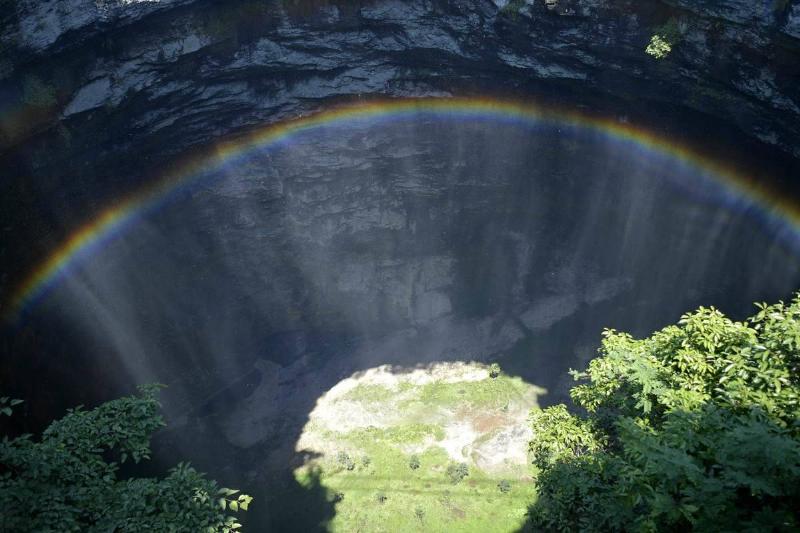
ADVERTISEMENT
Secured by their ropes the crew slowly repelled into the sinkhole with the help of their teammates. The speleologists and spelunkers made their way down into the 630-foot deep sinkhole in Southern Cina, having no idea what they were about to find.
ADVERTISEMENT
Descending 328 feet, they finally touched solid ground. Then, they hiked for hours to reach the base.
ADVERTISEMENT
The Sinkhole Was No Small Matter
ADVERTISEMENT
ADVERTISEMENT
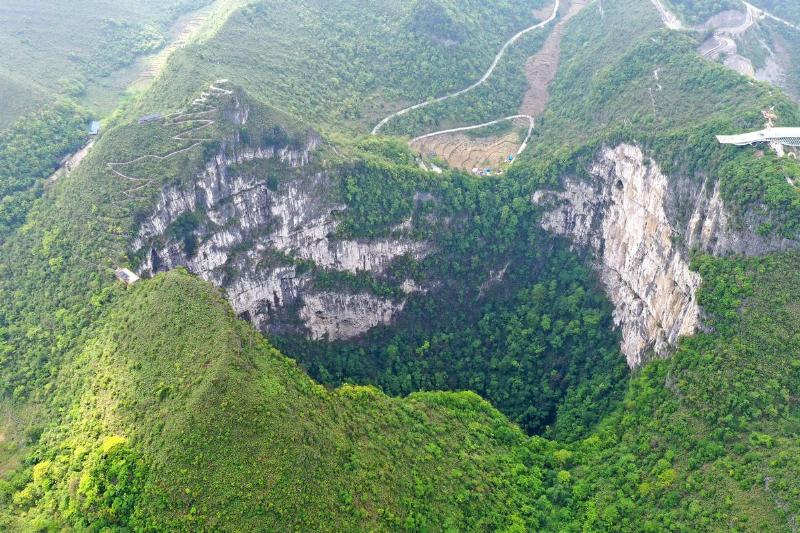
ADVERTISEMENT
According to Zhang Yuanhai, a senior engineer with the Institute of Karst Geology of China Geological Surve, the sinkhole measured 492 feet wide, 629 feet deep, and over 1,000 feet long. It was massive!
ADVERTISEMENT
Not only that, but the team found three caves within the sinkhole, most likely formed by erosion over time.
ADVERTISEMENT
As Impressive As The Sinkhole Is, The Largest Cave In The World Dwarfs It
ADVERTISEMENT
ADVERTISEMENT
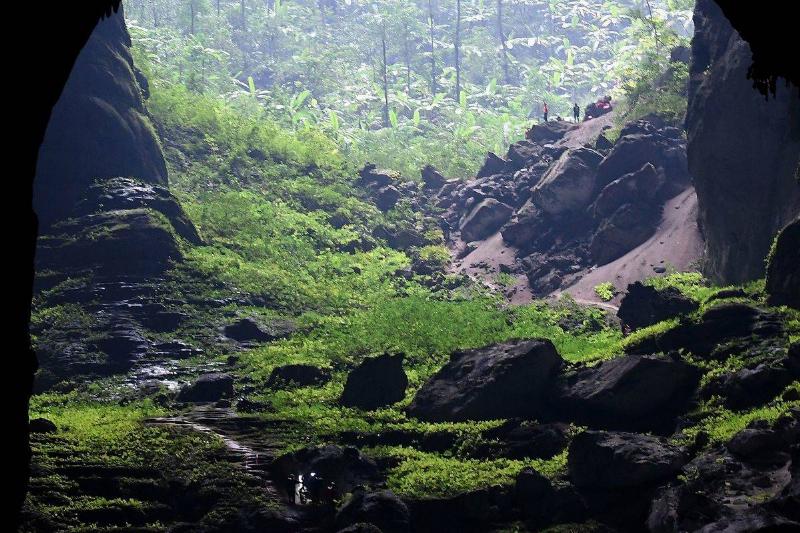
ADVERTISEMENT
Shockingly, the dense cavern systems the researchers discovered looks like an ant farm compared to the Son Doong.
ADVERTISEMENT
The Son Doong is the largest cave in the world. Located in Vietnam, the massive formation has a length of 9 kilometers and boasts 150 individual cave, as well as a subterranean jungle.
ADVERTISEMENT
Just A Few Miles Away Lies The Biggest Sinkhole In The World
ADVERTISEMENT
ADVERTISEMENT
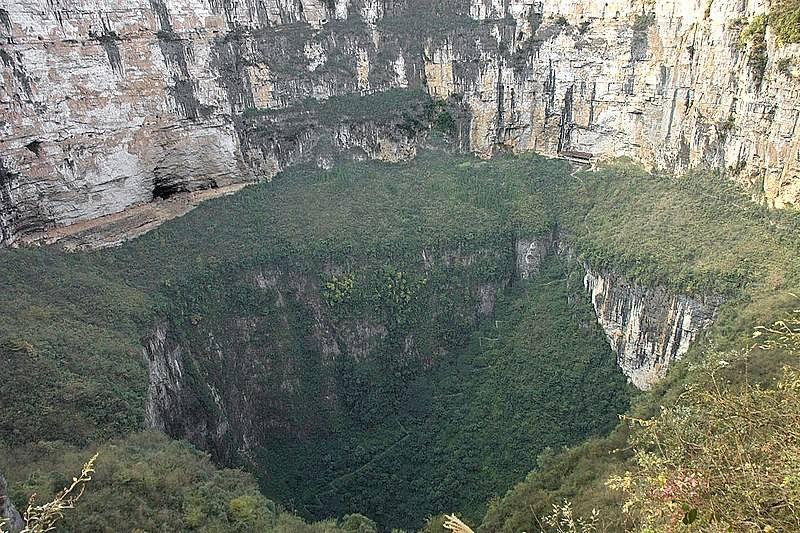
ADVERTISEMENT
Xiaozhai Tiankeng, the “Heavenly Pit” is the world’s deepest sinkhole between 511-662 meters deep. It’s so deep, a waterfall forms at its mouth during rainy season.
ADVERTISEMENT
At the bottom of this pit runs an underground river. Certainly scientists expected to find something similar when they discovered the newer sinkhole. But what they found would truly shock them.
ADVERTISEMENT
The Surprising Discovery: Prehistoric-Looking Trees
ADVERTISEMENT
ADVERTISEMENT
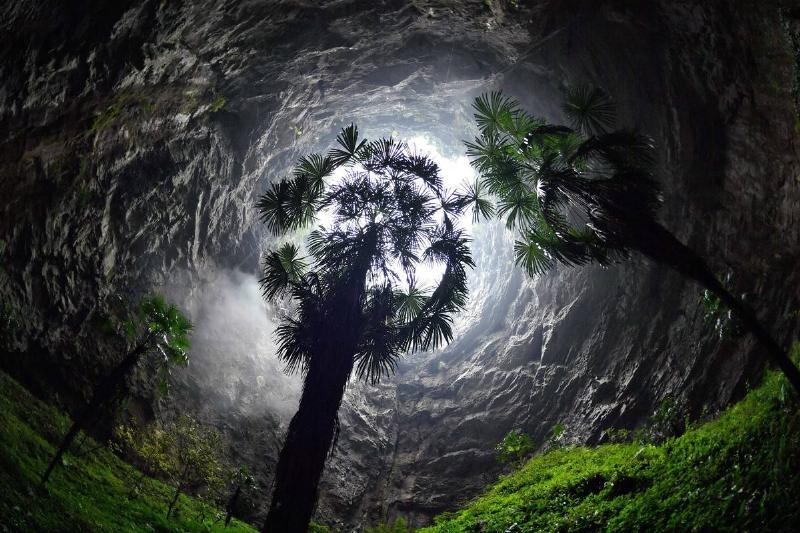
ADVERTISEMENT
The caves weren’t what caught the team’s eye, though. Within the sinkhole, they came across a primitive forest. Prehistoric-looking trees measuring over 130 feet tall, the team couldn’t believe what they found.
ADVERTISEMENT
With undergrowth reaching to the tops of their shoulders, the scientists looked up at the well-preserved trees in utter astonishment.
ADVERTISEMENT
The Trees Were Most Likely Not Things Lurking In The Hole
ADVERTISEMENT
ADVERTISEMENT
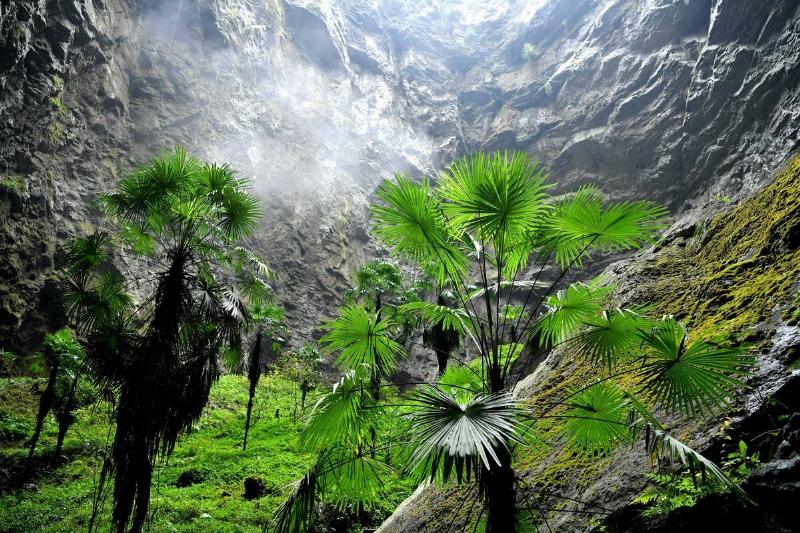
ADVERTISEMENT
The massive tree branches reached up towards the entrance of the sinkhole, towards the sunlight that filtered through the top. It was a wonder.
ADVERTISEMENT
According to Veni, the trees were most likely not the only signs of life in the sinkhole, stating that “such sinkholes can provide a veritable oasis for life.”
ADVERTISEMENT
A Welcomed Surprise
ADVERTISEMENT
ADVERTISEMENT
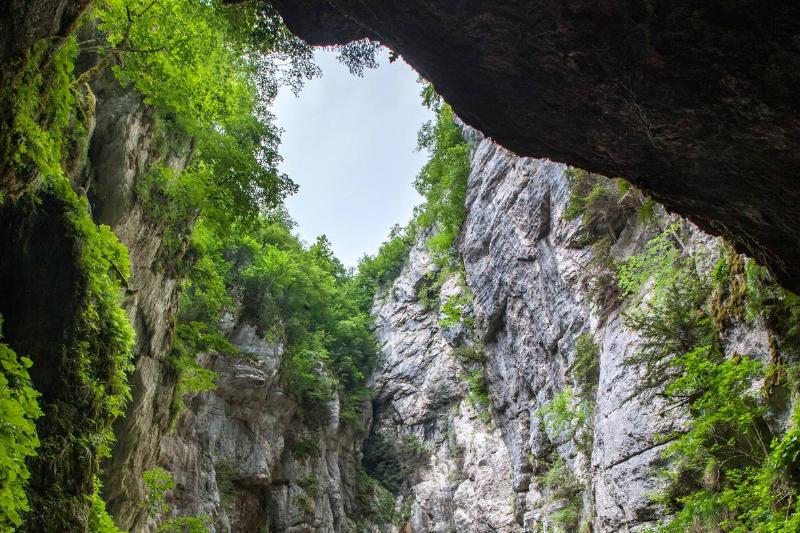
ADVERTISEMENT
According to the U.S. Department of the Interior, “[the] rock below the surface [of karst terrain] can easily be dissolved by groundwater circulating through the bedrock.”
ADVERTISEMENT
While it is a naturally occurring phenomenon, the Guangxi 702 cave expedition team was not prepared to discover a primitive forest with potentially unknown species. It was a welcomed surprise.
ADVERTISEMENT
“Spectacular Karst With Enormous Sinkholes…”
ADVERTISEMENT
ADVERTISEMENT
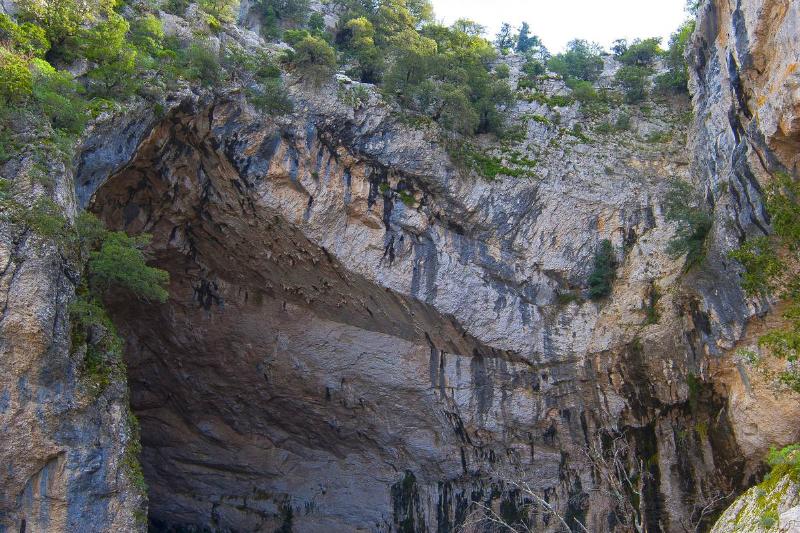
ADVERTISEMENT
Speaking of the karst terrain and the bedrock, Veni said, “Because of local differences in geology, climate, and other factors, the way karst appears at the surface can be dramatically different.”
ADVERTISEMENT
“So in China, you have this incredibly visually spectacular karst with enormous sinkholes and giant cave entrances and so forth.”
ADVERTISEMENT
This Sinkhole Was Much Larger Than Others In The Region
ADVERTISEMENT
ADVERTISEMENT
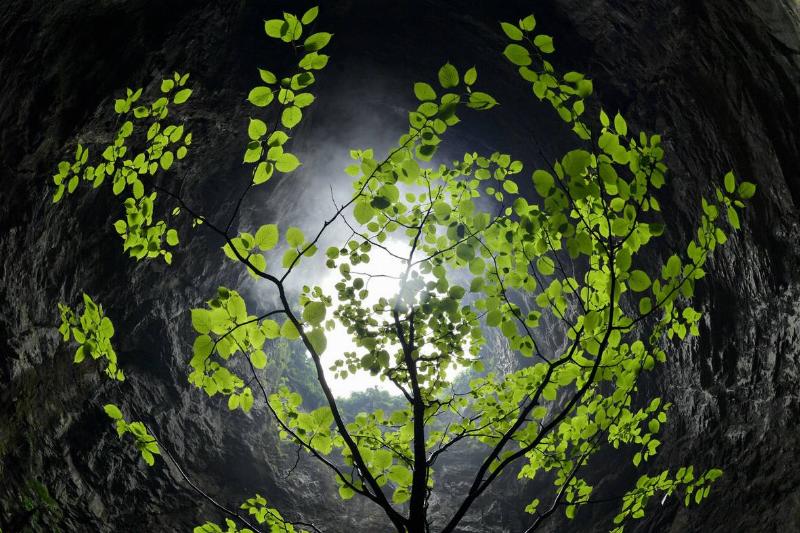
ADVERTISEMENT
Veni continued, saying, “In other parts of the world, you walk out on the karst, and you really don’t notice anything. Sinkholes might be quite subdued, only a meter or two in diameter. Cave entrances might be very small, so you have to squeeze your way into them.”
ADVERTISEMENT
Clearly, this was not the case!
ADVERTISEMENT
They Wouldn’t Be Shocked If There Were Unkown Species
ADVERTISEMENT
ADVERTISEMENT
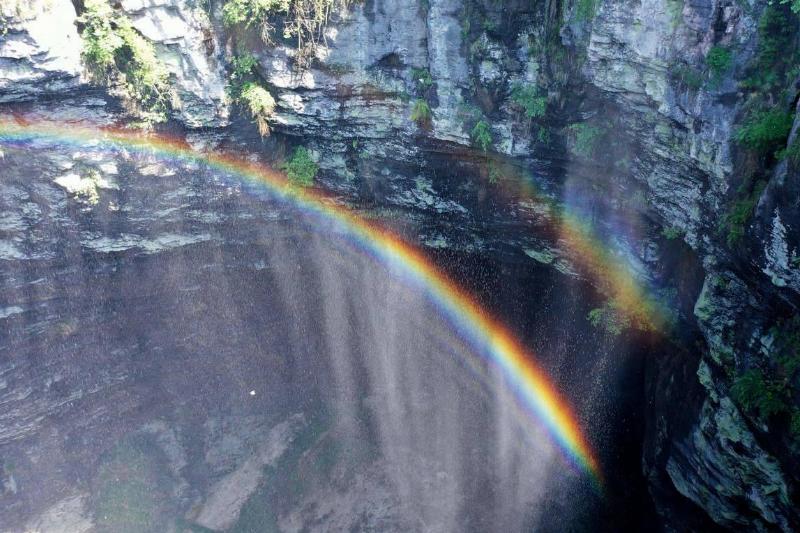
ADVERTISEMENT
The discovery amazed the team, as there might be species unknown to the scientific community lurking in the deep carven in the Guangxi Zhuang Autonomous Region.
ADVERTISEMENT
While speaking with Live Science, Chen Lixin, the expedition leader, said, “I wouldn’t be surprised to know that there are species found in these caves that have never been reported or described by science until now.”
ADVERTISEMENT
There Has Been More Than One Discovery In This Region
ADVERTISEMENT
ADVERTISEMENT

ADVERTISEMENT
While the discovery is amazing, and the ancient trees were a major find for science, it isn’t the first time China has encountered sinkholes. In fact, China’s Guangxi region is known for its beautiful karst landscape, a terrain that is known to be susceptible to sinkholes.
ADVERTISEMENT
There has actually been more than one discovery in this region.
ADVERTISEMENT
Discoveries In 2016 And 2019
ADVERTISEMENT
ADVERTISEMENT
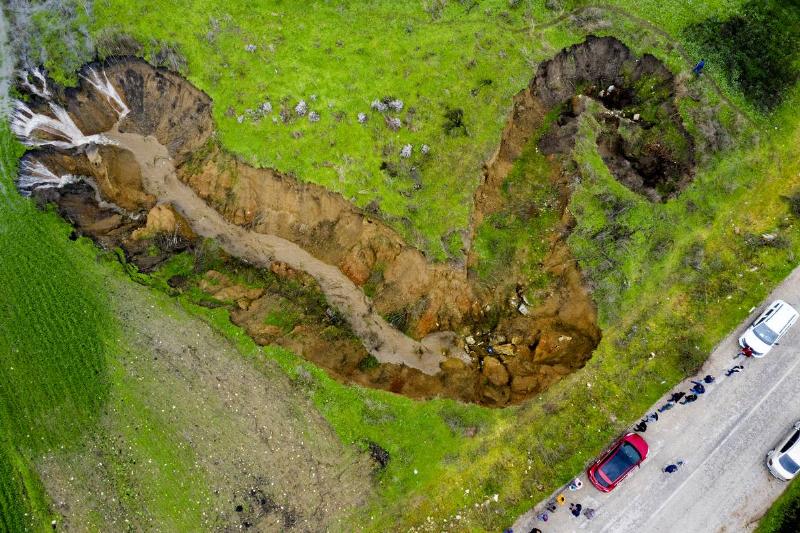
ADVERTISEMENT
In 2016, scientists discovered a cluster of sinkholes in Shaanxi province in northwest China. After further research, the scientists concluded that it was the largest cluster in the entire world!
ADVERTISEMENT
Then, in 2019, another giant cluster was found in the Guangxi region, the same place where Lixin and his team rappelled down into the 630-foot sinkhole in 2022.
ADVERTISEMENT
The Region Is Now Home To 30 Sinkholes
ADVERTISEMENT
ADVERTISEMENT
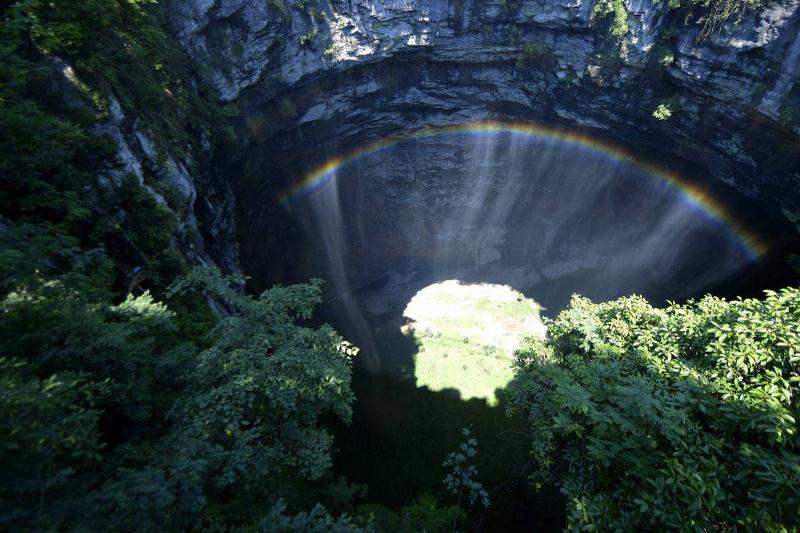
ADVERTISEMENT
Again, the Guangxi region is well-known for sinkholes, with the 2022 discovery bringing the number of holes up to a whopping 30, according to the Xinhua news agency.
ADVERTISEMENT
Of those 30 sinkholes though, it was the 2022 discovery that brought to light ancient trees and potential unknown species in the scientists’ research of the region.
ADVERTISEMENT
130-Foot Trees
ADVERTISEMENT
ADVERTISEMENT

ADVERTISEMENT
The pictures taken by the team are amazing, showing the stretching branches of the 130-foot tall trees and their ancient bark. Not only that, but the images show how tall the foliage on the ground is, reaching as tall as the grown adults’ shoulders.
ADVERTISEMENT
Collecting enough samples to analyze was going to take some time.
ADVERTISEMENT
The Meaning Of “Tiankeng“
ADVERTISEMENT
ADVERTISEMENT
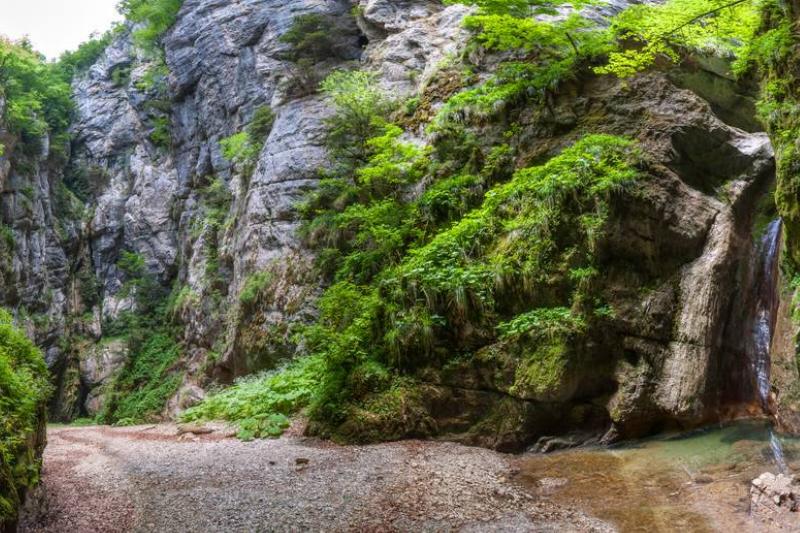
ADVERTISEMENT
In China, giant sinkholes such as the one discovered in May of 2022, are known as tiankeng, or “heavenly pits” in English.
ADVERTISEMENT
So, it might not come as too much of a surprise to learn that Leye County of the Guangiz Zhuang Autonomous Region is known as the “tiankeng capital of the world.”
ADVERTISEMENT
There’s More Left To Discover
ADVERTISEMENT
ADVERTISEMENT
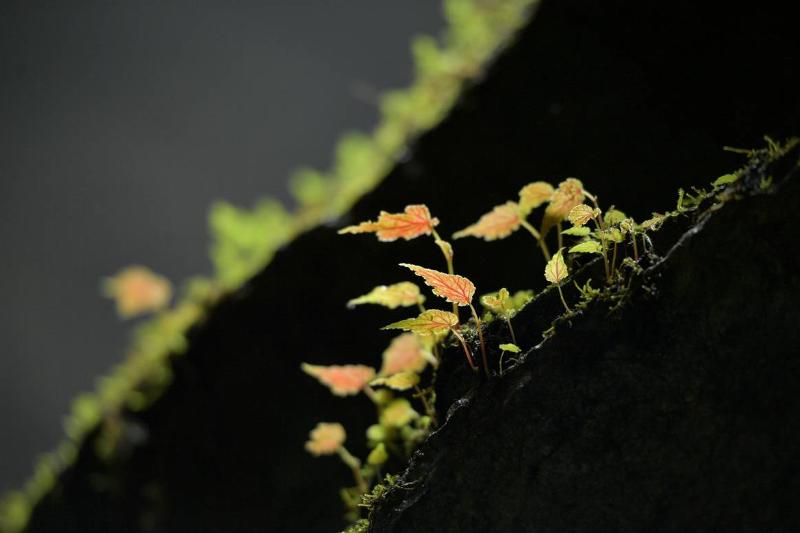
ADVERTISEMENT
The discovery at the bottom of the 630-foot deep sinkhole was unlike anything the team had imagined. Ancient and primitive-looking trees towering 130-feet tall and foliage on the ground reaching almost as tall as the explorers it was a sight to behold.
ADVERTISEMENT
With the new discovery and the potential for analyzing unknown species, it will be interesting to learn what the scientists find next.



